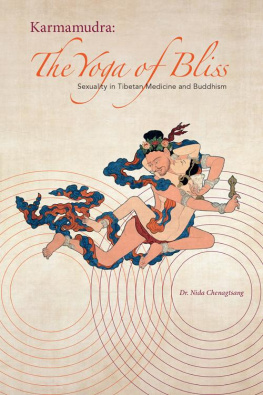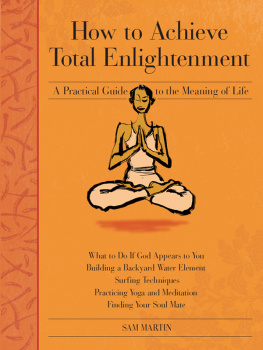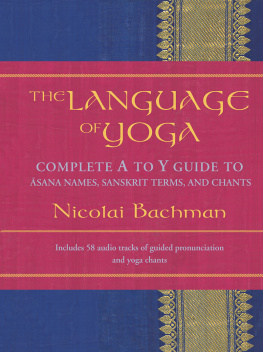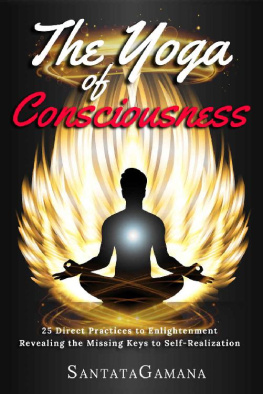APPENDICES
APPENDIX ONE
The Tantric Kin and House
The surv1vmg scriptures of all ancient philosophies contain descriptions of realms in the spiritual world. By the microcosm/ macrocosm commonality principle, As above, so below, the spiritual world is identical in structure to the world in which we live. In our ongoing research into the spiritual world, shows this commonality of realms. Read it carefully; for though the similarities are quite striking, the entries are not exact equivalents.
In our work and in ancient philosophy, we found that just as Ida and Pingala meet and intertwine, so spirits of diverse backgrounds have to meet, reconcile, and meld in the spiritual before the combined spirit can progress to higher realms.
You learned earlier that reincarnation is a progressive upward system. We are here on this plane of existence to grow and to learn all we can about ourselves and the world in which we live. It is clear that this process continues after death. In order to avoid many repetitive incarnations, you should work on this plane to learn those things that will allow you to progress most rapidly through the various stages in both present and future levels of reincarnation. After death, when a spirit no longer needs to return to this plane of existence, it melds with other similar spirits who have achieved high development before it progresses onward toward IT from which all spirits originate.

Figure 42. Progression on the Earth plane and in realms above. In each Earth incarnation, we progress both spiritually and evolutionarily. So the smallest bug can eventually evolve into human consciousness and each time the spirit matter grows. You eventually leave the Earth plane to meld with other spirits.
Table 6. Comparison of Spiritual Realms

From various experiments we have done with astraltraveling subjects, it appears that several advanced spirits meld into one. shows this process of reincarnation, both on the earth plane and in the spiritual world. When it first passes permanently into the spiritual world, the spirit still has much to learn. It's ready to move upyet still contains many earthplane ideas such as ego and petty emotions. It gets rid of these by melding with other spirits or by a learning process which is a continuation of that which it has already undergone. First male and female spirits merge, losing gender identity. Then people of different cultures merge, losing cultural identity. This seems to show that gender differences are easier to lay aside than cultural ones.
Tantrists believe that each spirit melds with three other spirits before progressing to the next plane of existence; and that this melding process is repeated at least four times before the spirit can rejoin IT. Just as the joining of the male and the female on the earth plane creates the yinyang completeness, so the melding of one person with three others is an earthplane equivalent of the melding that is to come on the other side of the Invisible Barrier.
Tantrists believe that the melding is designed to subordinate the individual self to the Whole. A key function of a Tantric house is to teach its members selflessness and willing melding with others, especially those of different racial and cultural backgrounds.
In the melding process each spirit surrenders part of its individuality to the new Whole, the larger spirit. Thus in order to meld quickly, the spirit must have a high degree of selflessness. Selflessness can be learned on this plane of existence, and it is most easily learned by giving up personal possessions, including the possession of a lover or spouse. Tantrists can develop this selflessness in their living arrangements, first in a Tantra house and then in the larger ashram.
EMOTIONS AND LOVE
In the Western world, the agape love idea promulgated by the entertainment industry and by romance novels has led many to believe that sexual intercourse is an inseparable part of loving another person. To the Tantrist this is a laughable concept. Sexual intercourse is for pleasure, for adjusting hormone levels, for removing tensions, for producing children, and for creating the macrocosm in the microcosm. Love is a relationship that may or may not have a sexual connotation. The mother and the father love a child; brothers and sisters love one another; married sexually active partners often hate each other and have nothing but the bed in common. In many Western minds fuck is a dirty word; moreover, it often carries the connotation of hostility between the partners. Thus a phrase like, I love her and I'm gonna fuck her brains out, is meaningless and contradictory. Tantrists do not confuse loving with lusting, or with sexual intercourse, or with learning selflessness.
Various Tantric rituals require sexual intercourse and contact. If you cannot or will not have sex with another member of the house, you must honestly examine with that other member the reasons for the problem. If he or she has a habit that to you is gross and repulsive, you should honestly tell of your revulsion. On the other hand, it may be faulty training or something within your own mind that says, I cannot do sex without love. All the members of a house should love each other. They all should work to help each other develop. More love exists between the members in a house than exists between many married couples; but it is not the wideeyed calflove of song and story. A Tantric definition of love might be the wish to see another develop to his or her fullest potential.
What if you are deeply in love with another person and you both join a Tantra house? You must give up your possessive attitude toward the other person. What if, in order to develop, one of you needs to take a job or attend a university in a distant place? The parting may be painful, but through the pain you learn selflessness and develop.
You learned earlier how raising the force is enhanced by the controlled use of sexual differences, and how emotional control is gained through the control of sex. In a Tantric group, sex is used for many purposes, such as overcoming your ego and possessiveness (both of other people and of personal property), and learning through multiple coupling with others how the macrocosm can be brought to the microcosm.
THE HOUSE AND THE ASHRAM
In shows these numbers at each level of progression. This explains why Tantrists strive toward having sixteen members in a house. If any group is to represent perfectly the macrocosm in the microcosm, it must contain the correct number of people. Thus a minimum house contains four and an ideal perfect house contains sixteen working adults; a minimum ashram 64, and an ideal ashram 256. When a house or an ashram passes perfection, it splits. It is our belief that the reason several large ashrams failed was the fact that they did not observe this simple rule. The Rajneesh ashram in Oregon had exceeded the limit of manageability a hundredfold and had to fail.
In some houses the memory of the numbers is reinforced by doing all the work of the kundalini cycle together in the exercise room. As with all things, the guru recommends you try it and see whether it feels natural and good to your house. The use of a roster for partner changes and a fairly rigid system of work and play seem to focus attention on the purpose of the ritual and away from free sex.
JOINING THE TANTRIC HOUSE
When you first transform your own house into a Tantric house by having another couple join you, all that will happen logistically is that you will adjust the living space to the requirements of Tantra. Soon, however, you will want others to join so you can extend your development. We make two suggestions:
Next page













